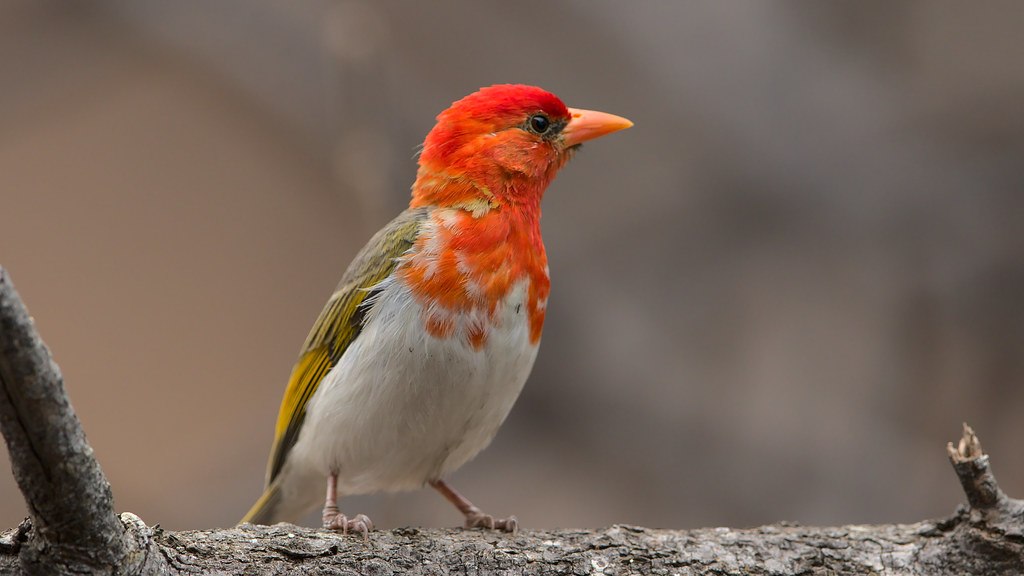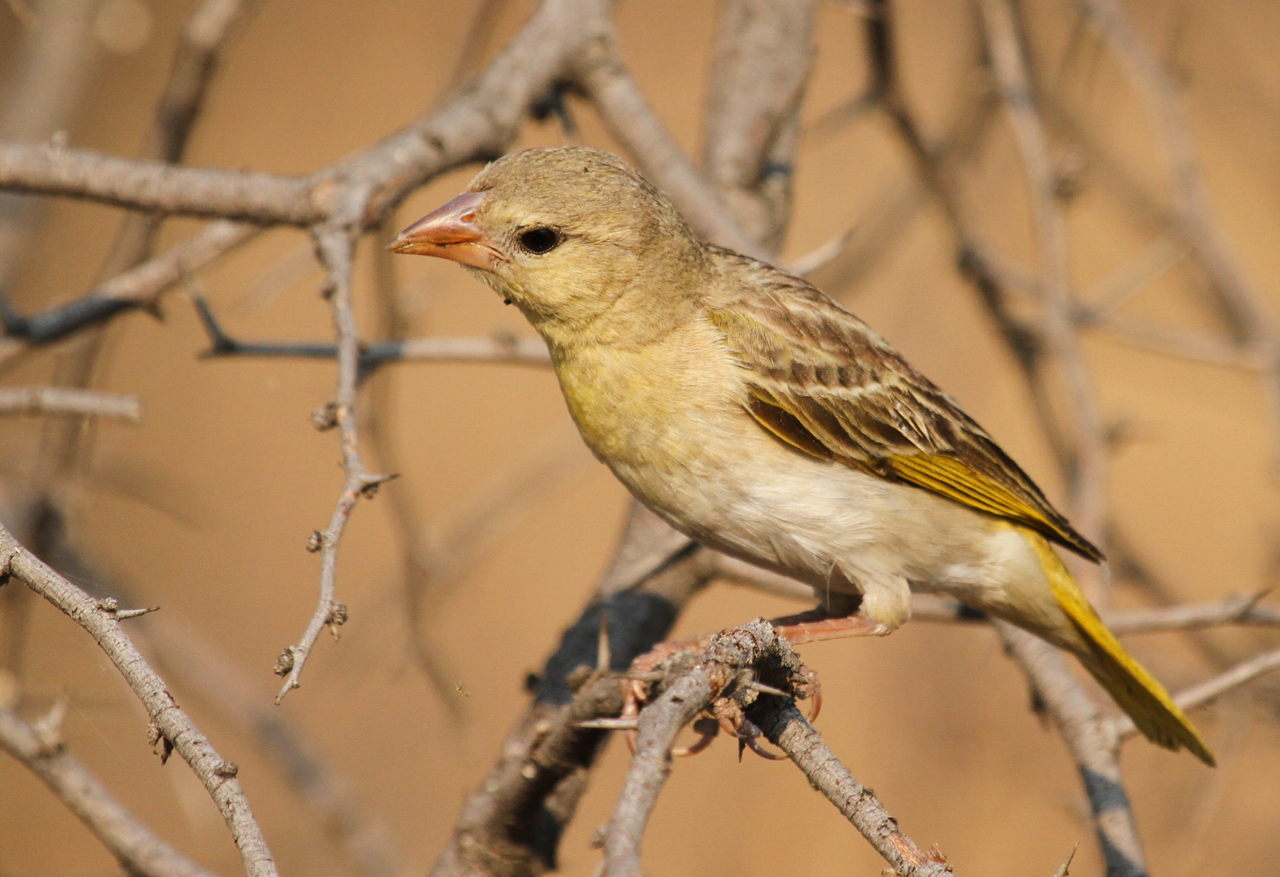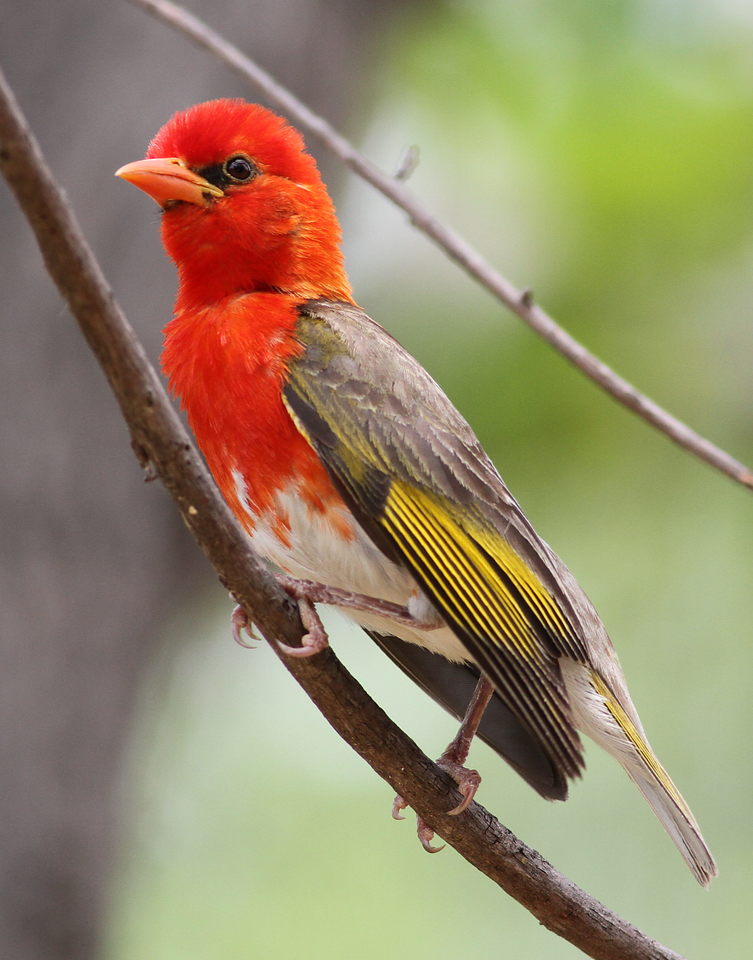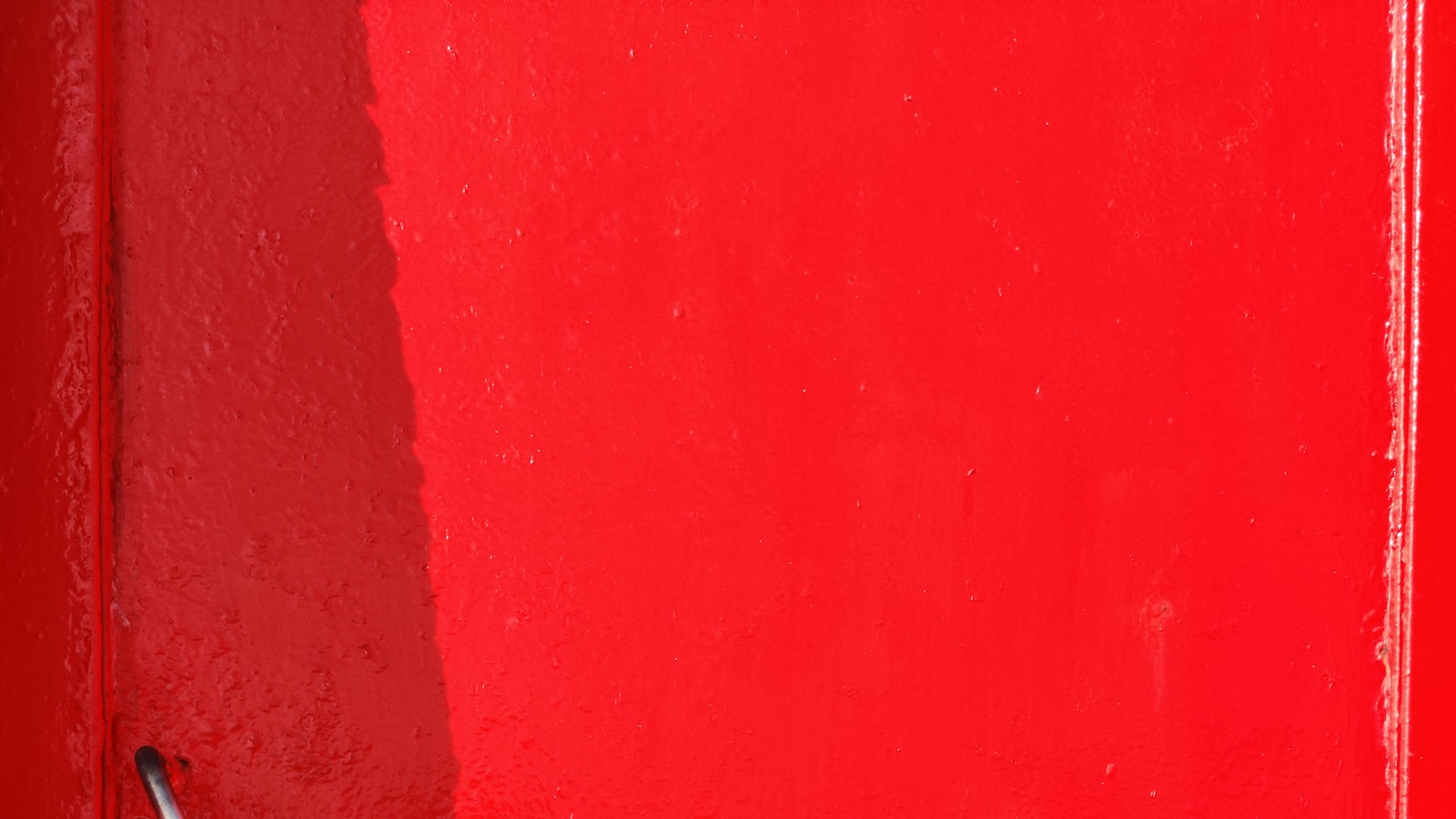In the vast grasslands of the iconic Masai Mara, where the golden sun sets upon a majestic savanna, lies a charming avian artist that spreads vibrant hues across the African landscape. Welcome to the world of the Red-headed Weaver, a small but enchanting bird that captures the attention and hearts of all who witness its intricate creations. With its fiery feathers and nimble beak, this feathered painter weaves an exquisite tapestry of nests, reminding us of the fantastic talents that nature bestows upon its smallest inhabitants. Join us as we delve into the captivating world of the Red-headed Weaver, where passion and precision merge to create living works of art within the tapestry of Masai Mara.
Table of Contents
- Red-headed Weaver: A Glorious Sight in Masai Mara National Park
- Exploring the Breathtaking Plumage and Unique Characteristics of the Red-headed Weaver
- Conservation Efforts for the Red-headed Weaver in Masai Mara National Park
- Protecting the Habitat of the Red-headed Weaver: A Crucial Step for Preservation
- Tips for Birdwatchers: Spotting the Red-headed Weaver in Masai Mara National Park
- Q&A
- Final Thoughts
Red-headed Weaver: A Glorious Sight in Masai Mara National Park

The Masai Mara National Park is undoubtedly one of Africa’s most iconic wildlife destinations. With its vast grassy plains, rolling hills, and meandering rivers, this paradise offers an array of stunning wildlife sightings. Among the countless species that call this park home, the red-headed weaver stands out as an enchanting and captivating sight.
Dressed in a vibrant plumage of fiery red and contrasting ebony, the red-headed weaver is a master of its craft. These skilled artisans weave intricate nests, showcasing their remarkable ability to create architectural marvels out of grass and twigs. Their meticulously designed nests hang from acacia trees, fluttering in the breeze as if painting the landscape with dashes of color. During the breeding season, the male weavers showcase their flamboyant nests to attract a mate, transforming the Masai Mara into a living gallery of intricate bird architecture. It’s a mesmerizing sight to behold, watching these industrious creatures diligently build their nests while their melodious calls fill the air.
Exploring the Breathtaking Plumage and Unique Characteristics of the Red-headed Weaver

Located in the Masai Mara National Park, the red-headed weaver is a bird species that never fails to captivate visitors with its stunning plumage and unique characteristics. This delightful avian creature stands out against the vibrant backdrop of the park’s diverse ecosystem.
With its distinct red crown and black body, the red-headed weaver is a sight to behold. The vibrant colors of its plumage highlight its presence, making it a favorite amongst birdwatchers and nature enthusiasts. One of the most unique features of this species is its intricate nest-building skills. Male red-headed weavers construct elaborate, pendulous nests made of grass and twigs. These nests hang precariously from branches, swaying gently in the wind. It is an awe-inspiring sight to witness these skilled craftsmen weaving and constructing their architectural marvels.
Apart from its fabulous plumage and nest-building talents, the red-headed weaver is also known for its melodious song. Its sweet and melodious notes can be heard echoing through the vast open landscapes of the Masai Mara, adding to the magical ambiance of this incredible national park. Spotting a red-headed weaver perched on a tree branch, singing its heart out, is an experience that leaves visitors spellbound. As you wander through the picturesque landscapes of the Masai Mara National Park, keep an eye out for this remarkable bird, and be prepared to be awestruck by its breathtaking plumage, extraordinary nests, and enchanting melodies.
Conservation Efforts for the Red-headed Weaver in Masai Mara National Park

Masai Mara National Park is renowned for its incredible wildlife diversity and breathtaking landscapes. Among the many species that call this park home, the Red-headed Weaver (Ploceus rubriceps) stands out with its vibrant plumage and unique nesting habits. This small bird, endemic to the Masai Mara region, has captured the attention of conservationists and researchers alike, leading to dedicated efforts to ensure its survival.
Conservation initiatives for the Red-headed Weaver in Masai Mara National Park have primarily focused on protecting its natural habitat and addressing the threats it faces. These efforts include:
- Preserving and restoring the woodland areas within the park that serve as crucial breeding and nesting grounds for the species;
- Implementing strict anti-poaching measures to deter the illegal trade of Red-headed Weavers, as their exotic feathers are highly sought after;
- Encouraging sustainable agriculture practices in the surrounding communities to mitigate habitat destruction caused by land conversion;
- Engaging local communities in awareness campaigns and education initiatives, emphasizing the importance of conservation and the role they can play in protecting the Red-headed Weaver;
- Tracking and monitoring the bird populations within Masai Mara National Park to gain valuable insights into their behavior, migration patterns, and population dynamics.
By prioritizing the conservation efforts for the Red-headed Weaver, Masai Mara National Park continues to foster a thriving ecosystem that supports various bird species. These initiatives not only safeguard the future of this iconic bird but also contribute to the overall biodiversity and ecological balance of the park. The commitment to preserving the Red-headed Weaver’s habitat demonstrates Masai Mara National Park’s dedication to maintaining the diversity and beauty that has captivated nature enthusiasts from around the world.
Protecting the Habitat of the Red-headed Weaver: A Crucial Step for Preservation

Masai Mara National Park:
Located in southwestern Kenya, the Masai Mara National Park is not only renowned for its stunning landscapes and abundant wildlife, but it also serves as a vital habitat for a unique bird species – the Red-headed Weaver. This small, colorful bird with its bright red head is a remarkable sight to behold and plays a crucial role in the ecosystem of the park.
The abundant vegetation within the park provides the perfect nesting grounds for these weavers. With their incredible weaving skills, they construct intricate nests using grass and other natural fibers, hanging them from the branches of Acacia and bamboo trees. By protecting the habitat of the Red-headed Weaver, we are not only ensuring their survival but also safeguarding the biodiversity of Masai Mara National Park.
The Threats:
Despite the efforts to preserve the park and its inhabitants, the habitat of the Red-headed Weaver faces various challenges. Deforestation, primarily due to human activities such as logging and agriculture, poses a significant threat. The clearing of land disrupts the natural balance, leaving these birds vulnerable without suitable nesting sites.
Additionally, climate change and increasing droughts have a direct impact on the availability of water and food sources for the weavers. These birds heavily rely on insects and seeds, which may become scarce during dry seasons. Such pressures on their habitat highlight the urgent need for proactive conservation measures.
Tips for Birdwatchers: Spotting the Red-headed Weaver in Masai Mara National Park

About the Red-headed Weaver
Native to the stunning Masai Mara National Park, the Red-headed Weaver is a dazzling bird species that will surely captivate any birdwatcher’s heart. With its vibrant red head, contrasting sharply against its black body, this weaver is a true gem of the African savannah. Nestled among the acacia trees, it is an incredible sight to behold.
This small avian beauty is renowned for its skillful construction of intricately woven nests. Unique to the males, their skillful expertise in crafting these remarkable nests becomes a remarkable sight for visitors to witness in Masai Mara National Park. The Red-headed Weaver’s craftsmanship showcases their dedication to creating the perfect shelter for their young.
Tips for Spotting
- Time of the day: The Red-headed Weaver is most active in the early morning and late afternoon. Plan your birdwatching adventure during these times for the best chance of spotting their vibrant plumage.
- Preferred Habitat: These birds tend to dwell in acacia trees along water sources in the Masai Mara National Park. Keep a keen eye out for them near rivers or lakes, where they often gather to find food and water.
- Listen for their Melodic Calls: The Red-headed Weaver has a distinct song that can be heard echoing through the savannah. Take a moment to be still and listen for their beautiful, melodious calls to guide you to their presence.
- Pack your Binoculars and Camera: To fully appreciate the intricate details of their plumage and observe their nest-building techniques, make sure to bring your trusty binoculars and camera equipment along. You won’t want to miss capturing their exquisite beauty and behavior in action.
Q&A
Q: What can you tell us about the Red-headed Weaver in Masai Mara?
A: The Red-headed Weaver in Masai Mara is an engaging species of bird famed for its vibrant plumage and intricate nest-building skills.
Q: Where is Masai Mara located?
A: Masai Mara, also known as Maasai Mara, is a captivating game reserve located in southwestern Kenya, bordering Tanzania.
Q: What makes the Red-headed Weaver unique?
A: What sets the Red-headed Weaver apart is its striking red head, contrasting beautifully with its black body. This fiery plumage distinguishes it from other weaver bird species found in the region.
Q: Can you describe the habitat of the Red-headed Weaver?
A: The Red-headed Weaver is primarily found in the semi-arid grasslands and savannahs of Masai Mara. It prefers areas with tall vegetation, including acacia trees and thickets, where it builds its distinctive nests.
Q: Are Red-headed Weavers social birds?
A: Yes, Red-headed Weavers are sociable creatures and often congregate in colonies, building their nests in close proximity to one another. They exhibit excellent teamwork and enjoy the camaraderie within their communities.
Q: How do Red-headed Weavers build their nests?
A: Red-headed Weavers are renowned for their remarkable nest-building skills. The males, responsible for constructing the nests, intertwine long strips of grass, creating intricate, hanging structures called “weaver nests.” These nests are often suspended from branches, providing safety from predators and easy access for the birds.
Q: What is the purpose of the Red-headed Weaver’s nests?
A: The nests serve two primary purposes for the Red-headed Weavers. Firstly, they provide a safe haven for the female weavers to lay their eggs and raise their young. Secondly, these nests play a vital role in the courtship rituals of the species, with males crafting elaborate structures to attract potential mates.
Q: What is the Red-headed Weaver’s diet?
A: Red-headed Weavers predominantly feed on a variety of seeds, insects, and small fruits. Their diet consists of grass seeds, grain, and occasionally insects like ants and beetles. These birds are often seen foraging on the ground or among the grasses.
Q: Are Red-headed Weavers migratory?
A: Red-headed Weavers are non-migratory birds, meaning they do not undertake long-distance seasonal movements. They are known to exhibit strong site fidelity, returning to the same breeding grounds year after year.
Q: How can one spot the Red-headed Weaver while visiting Masai Mara?
A: To catch sight of the Red-headed Weaver in Masai Mara, keep an eye out for its vibrant red head perched high on acacia trees or balancing on the edges of its woven nests. The weaver’s presence is best observed during the breeding season when the males are most active, showcasing their exceptional nest-building abilities.
Q: How can tourists help conserve the Red-headed Weaver population?
A: Visitors to Masai Mara can contribute to the conservation efforts for the Red-headed Weaver and other avian species by respecting designated protected areas and minimizing disturbances to their natural habitats. Supporting local initiatives that promote sustainable tourism and environmental education also plays a crucial role in preserving these remarkable birds for future generations to enjoy.
Final Thoughts
In the enchanting realm of avian wonders, where vibrant plumages traced the sky with strokes of impeccable artistry, one species paints a mesmerizing scene all its own. Delicately maneuvering through the reeds, the red-headed weaver leaves a tale of skillful craftsmanship woven into the fabric of nature. With a subtle touch laced with creative finesse, the time has come to bid farewell to our spirited subject.
As the sun dips below the horizon, casting a golden hue upon a lush tapestry of foliage, the red-headed weaver seeks solace in its intricately crafted abode. Suspended amongst the swaying reeds, their unique nests stand as testament to their unrivaled architectural prowess. Fine blades of shimmering grass delicately entwined create a masterpiece of symmetry and function, offering both shelter and secure haven.
The male red-headed weaver, adorned with a fiery crown that commands attention, dances with effortless grace upon the cattails. A master weaver in his own right, his beak darts skillfully through strands of wild grass, deftly manipulating each fiber to create a work of exceptional art. With each stitch and knot, he enthralls onlookers with his meticulous process, leaving a legacy that will stand the test of time.
But let us not overlook the exceptional abilities of the less flamboyant females in this mesmerizing symphony of nature. As observant as they are patient, their dainty frames harmonize with their surroundings, gently collecting twigs and grass blades to add to their shared masterpiece. They, too, take up the baton of creativity, weaving and shaping their nests with impeccable precision.
Through each nest uniquely formed, the red-headed weaver invites us to contemplate the majesty of life’s intricate balance. Their impeccable craftsmanship does not go unrecognized, even by the busily buzzing dragonflies or the ethereal butterflies that frequent their dwelling. With each day, as dawn chorus echoes through the marshlands, the red-headed weavers serve as a symbol of resilience and inspired ingenuity.
As we bid adieu to the vibrant world of the red-headed weaver, their nests silently whisper tales of a world crafted with unyielding creativity. So let us take a moment to ponder the lessons they gently gift us – that beauty lies in both flamboyance and subtlety, that skilled hands can weave masterpieces from the simplest of threads, and that nature, in all its splendor, continues to leave us awestruck. In this dance between creature and habitat, the red-headed weaver has carved its mark, an elegant finale to a tale spun with a touch of magical brilliance.




